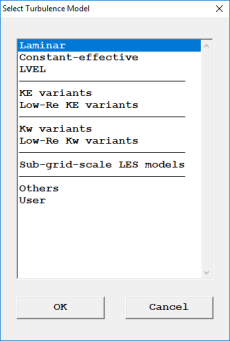Modern CFD software suites offer a huge amount of different turbulence models for RANS simulations, each with their own distinct strengths and weaknesses. But how do you know which one is the most appropriate for your simulation?
Simulating turbulence in general requires Direct Numerical Simulations (DNS) which in turn requires huge amount of computational power and long runtimes, making it not very practical. In order to simulate the practical behaviour of the fluid, we use RANS which relies on turbulence models. They do not take into account singularities of the flow but rather the bulk properties, in other words, they give us the effect of turbulence without having to simulate it directly, which is perfect for the vast majority of industrial scenarios.
The different types of models:
- K-ε turbulence models provide a general-purpose starting point. Use them when you want to study simple cases like an external flow at moderate velocity over an object. They are not memory-extensive and have a good convergence rate. Standard and Chen-Kim are the basic choice, Realisable k-ε is slightly harder to converge but is more precise under strong pressure gradient. These are great for urban and marine flows.
- K-ω turbulence models are harder to converge and use more RAM. K-ω is mostly used for internal flows like in turbomachinary applications in which the velocity and mixing is high and the fluid is very constrained within the domain. Although they behave poorly in the free stream (away from walls or objects), the SST model and Menter’s provide more versatile tool for diverse flow type scenarios than the other k-ω. These are great for aerodynamics problems: flow past propellers, airfoils…
- LVEL turbulence model is especially useful when it comes to studying conjugate heat transfer and flow in confined spaces (think electronics cooling, pipe flow…)
Regarding High or Low Reynolds number models:
- High-Reynolds number turbulence models are usually set by default, they don’t require a fine mesh and thus, run faster. It should be chosen for cases where the boundary layer won’t matter as it is not captured, so when the cells near a wall are big compared to the size of the boundary layer (y+ bigger than 20).
- Low-Reynolds number turbulence models require a very fine grid near the wall to achieve y+<1. The near-wall area flow is precisely simulated but costs a lot more computation time.

To know more about Turbulence models in PHOENICS, visit TURBULENCE MODELS IN PHOENICS
Share this:




